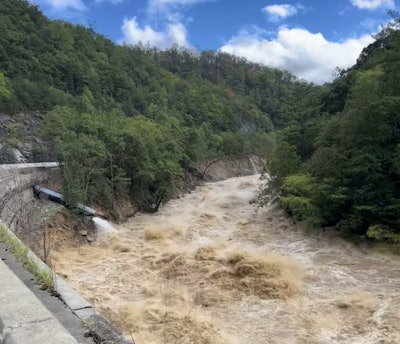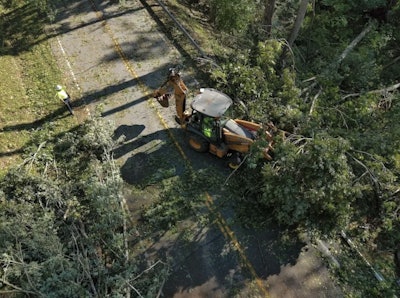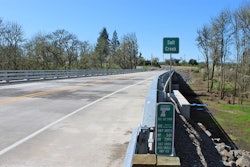
It’s been over seven months since Hurricane Helene, a Category 4 storm, first made landfall in the Southeast U.S. on September 27.
The deadly storm caused billions of dollars in damage, particularly in western North Carolina and had state departments of transportation scrambling to remove debris and open roads.
DOTs in some of the key states impacted by Helene are reflecting on what’s been accomplished to help rebuild their communities.
South Carolina: Biggest Debris Pickup Since 1989
Cleaning up in the wake of Helene’s destruction was the South Carolina Department of Transportation’s largest debris mission since 1989, said SCDOT Media Relations Manager Hannah Robinson. The department is still cleaning on top of the 5 million cubic yards it has already removed.
 SCDOT crews worked to clear the thousands of trees that fell across the western part of South Carolina.SCDOT
SCDOT crews worked to clear the thousands of trees that fell across the western part of South Carolina.SCDOT
“This storm was unlike many we’ve seen in the past,” said Robinson. “In some cases, our crews in the northern and northwestern areas of the state had to cut tree limbs and other debris to get out of maintenance yards to begin response to the storm.”
SCDOT opened many roads and bridges in the weeks after the storm, with the remaining work being completed through $55 million in emergency contracts to expedite the work. Over 90% of the work on contract sites is complete.
“Recently, SCDOT has participated in discussions, both internal and external, to talk about the challenges of this storm and how we can improve our response and continue our service to the great state of South Carolina,” added Robinson.
North Carolina: Success on I-40
Since Helene hit, workers have reopened 90% of the roads that were damaged, and repaired and replaced 270 bridges and 870 culverts, according to a March 28 NCDOT press release.
Its greatest accomplishment since Helene hit has arguably been the reopening of Interstate 40 along the North Carolina/Tennessee border. I-40 became impassable in multiple locations after portions collapsed, and I-26 closed at the Tennessee state line.
Five months after Helene, two lanes on North Carolina’s Interstate 40 through the Pigeon River Gorge reopened March 1, reconnecting the interstate with Tennessee.
 Western North Carolina saw significant road damage after Hurricane Helene.NCDOT
Western North Carolina saw significant road damage after Hurricane Helene.NCDOT
“We are happy to have I-40 open and operating in a limited capacity, and we also know that tons – literally thousands of tons – of work remains to restore I-40 completely,” said NCDOT Division 14 Engineer Wesley Grindstaff.
Many roads, including I-40, currently only have temporary fixes, and NCDOT says it has permanent repairs in various stages of planning and construction. The department says it has also entered into alternative delivery contracts to restore some critical corridors in Yancey and Mitchell counties, through Gerton, Bat Cave and Chimney Rock, and for I-40 in the gorge.
One innovative way the state has been reconnecting communities is through converted railcar bridges, built and installed by Innovative Bridge Company out of Petal, Mississippi. Owner Lee Roberts told Equipment World in March that 60 of IBC’s railcar bridges were in use in North Carolina at the time.
Tennessee: Bridges Back Up
Immediately after Helene passed, the Tennessee DOT reported five bridges had been destroyed and dozens were closed. Over 100 bridges were inspected by TDOT in the first 36 hours.
 Hurricane Helene caused historic damage to Tennessee bridges and roadways.TDOT
Hurricane Helene caused historic damage to Tennessee bridges and roadways.TDOT
Of the 49 roads and bridges closed, only five remain shut as of April 22, said Mark Nagi, TDOT regional communications officer in East Tennessee. Nagi said 25 routes were back open within 100 hours of the storm’s arrival.
Notable reopenings include:
- I-26 in Unicoi County to one lane of traffic in each direction, 34 days after the twin bridges at MM 39 were destroyed.
- I-40 in Cocke County to one lane of traffic in each direction within 3.5 weeks.















